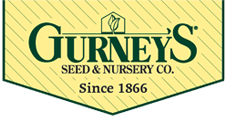For most gardeners, November is a month for raking leaves and racking your brain trying to figure out what to do with them. You could put them in the street or bag them, but why let them go to waste? Here’s a suggestion: Composting. Besides being extremely earth-friendly, composting is the best way to build fertile, productive soil.
What and When to Compost
You may be surprised what kinds of materials can be composted. Leaves, dead plants, grass clippings, vegetable scraps and other organic material can all be composted. The fall season is the best time to start a compost pile – the composting process continues throughout the winter.
Chop or shred leaves before adding them to your compost pile, because intact leaves tend to mat down. Remember, you should always add roughly equal amounts of “green” and “brown” material at any given time, and your compost should contain a mix of nitrogen and carbon-rich materials. Green, leafy waste is high in nitrogen, and brown, woody scraps are high in carbon. You may not be able to use all your leaves at once; bag up the rest and hold onto them for next summer, when you’ll surely be looking for more “browns” to add to the “greens” you’ll have coming out of your ears!
Composting is great for your garden, and it’s very easy. All you need is a small area in your garden for a compost pile, or a compost bin. If you don’t already compost, you can buy or construct a bin, or purchase a barrel-sized crank-operated composter, which are far more efficient than traditional composting methods. See, with a composter, the two main ongoing jobs as each batch “cooks” are to turn the compost often to aerate it, and to add water if it gets dry.
Fall is the best time to start a compost pile. So get out there in your garden in the crisp fall weather and have fun!
Check out these great Gurney’s composting products!
